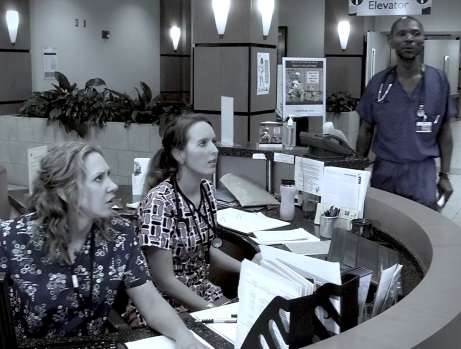New Workplace Violence Standards for Healthcare - Effective January 2022

Joint Commission Changing Workplace Violence Prevention Standards for Hospitals
Winter is coming...
and so are NEW & REVISED Workplace Violence Standards for hospitals and critical access hospitals accredited by The Joint Commission (TJC).
Are you ready? What do you need to know?
These standards will be effective on January 1, 2022 and include specific changes and enhancements to the Environment of Care, Human Resources, and Leadership chapters of Joint Commission standards.
DEFINITIONS AND REQUIREMENTS
TJC now defines workplace violence as:
“An act or threat occurring at the workplace that can include any of the following: verbal, nonverbal, written, or physical aggression; threatening, intimidating, harassing, or humiliating words or actions; bullying; sabotage; sexual harassment; physical assaults; or other behaviors of concern involving staff, licensed practitioners, patients, or visitors.”
New standards require all accredited organizations to “maintain a workplace violence prevention program, and that the program” (LD.03.01.01):
- Is led by a designated individual.
- Is developed by a multi-disciplinary team.
- Has policies and procedures to prevent and respond to workplace violence.
- Has a process for reporting and analysis of workplace violence incidents.
- Has a process to follow-up and support victims of workplace violence.
- Has a process for reporting of workplace violence incidents to the organization’s governing body.
- Annual Assessment: Each organization must conduct an annual assessment of the effectiveness of its workplace violence program and act on its findings. This worksite analysis MUST be documented and needs to be "a proactive analysis of the worksite, an investigation of the hospital’s workplace violence incidents, and an analysis of how the program’s policies and procedures, training, education, and environmental design reflect best practices and conform to applicable laws and regulations." (EC.02.01.01)
- Documentation: Requires a formal process to document, monitor, and investigate all “workplace violence incidents” and requires that "a summary of such incidents may also be shared with the person designated to coordinate safety management activities." (EC.04.01.01)
Training & Education: Requires that the organization “provide training, education, and resources (at time of hire, annually, and whenever changes occur regarding the workplace violence prevention program) to leadership, staff, and licensed practitioners.” (HR.01.05.03)
This training must include (commensurate with specific duties and responsibilities):
-
- What constitutes workplace violence.
- Education on the roles and responsibilities of leadership, clinical staff, security personnel, and external law enforcement
- Training in de-escalation, nonphysical intervention skills, physical intervention techniques, and response to emergency incidents
- The reporting process for workplace violence incidents
NEXT STEPS
What should you do now?
|
➦ Senior Leadership Awareness |
|
➦ WPV Policy & Program Review Action: Organizations should review current WPV policies and programs to ensure compliance with the updated and revised definition of what constitutes workplace violence. Action: Perform a gap analysis against the new standards and implement changes as needed. Best Practice: While TCJ does not specify who should conduct such an analysis, organizations that have utilized external subject matter experts have been favorably assessed by TJC. A thorough review by external subject matter experts can provide leaders with an unvarnished review free from any embedded organizational bias. |
|
➦ Multi-disciplinary Team Action: If you do not already have one, form a multi-disciplinary team (MDT) to address WPV matters. At a minimum, this team should include the following entities: Security, Legal, Risk Management, and Clinical Leadership. Action: The MDT should review the previously completed worksite analysis/gap analysis and develop a process for continually monitoring, internally reporting, and investigating workplace violence incidents involving patients, staff, or others within its facilities. This process must be formally documented, and an overview of the process must be included in the organization’s WPV training program(s). Best Practice: The MDT team should meet at regular intervals for training (we recommend quarterly) and on an “as needed” basis to address WPV incidents. WPV prevention requires a consistent enterprise-wide response. A well organized, trained MDT breaks down organizational barriers and promotes better decision making while avoiding the perils of unintended consequences so often found in siloed responses. It’s important to avoid inflicting “good ideas” on other departments without their specific input and unique perspective. |
| ➦ Education & Training Action: Develop and implement a training and education plan to address prevention, recognition, response, and reporting of workplace violence. Best Practice: A trained workforce is a confident workforce. Workers who’ve been trained in crisis response are better able to respond in times of high stress. The “mental muscle memory” that’s developed through training and exposure to tested intervention strategies has been shown to significantly improve response while reducing employee stress. A combination of media-based initial/refresher training augmented with live instruction and, in select cases, role-play, has also proven to be highly effective |
| ➦ After-care & Follow-up Action: Develop a formal plan for after-care and follow up with employees exposed to or impacted by workplace violence incidents. Best Practice: Employees are our most important resource. Exposure to a WPV incident will likely have a lasting impact on staff. Having a comprehensive after-care plan that goes beyond what traditional EAP programs provide shows employees that the organization is deeply committed to their welfare. A strong after-care program will not only coordinate wrap-around services for victimized employees but will also provide valuable information for management regarding the re-integration of employees to the workplace. |
RESOURCES AND LINKS
The Joint Commission
The full prepublication standards can be found at:
International Association for Healthcare Security and Safety (IAHSS)
This past Summer, IAHSS convened a panel of healthcare security Subject Matter Experts and developed a training program designed to educate organizations on these new standards. IAHSS will begin offering this course in early December 2021. It’s our pleasure to inform that Don Robinson was one of the subject matter experts involved in developing this course.
International Association for Healthcare Security and Safety Homepage
We can help
- Conduct a TJC compliant worksite/gap analysis of your WPV program
- Develop and deliver TJC compliant WPV training programs
- Develop and deliver after-care programs
- Help select and train your MDT
- Serve as your MDT, augmenting your own staff while providing our experience and expertise through our Virtual Threat Manager® Program
Winter is coming … Don’t wait. Prepare now.


ABOUT DON ROBINSON: For 23 years, Don worked for the FBI – specializing in counterterrorism, organized crime and narcotics investigations, and serving as a regional program coordinator for FBI Domestic Terrorism, Civil Rights and Organized Crime programs. After retiring, Don began a second career in behavioral health where he established one of the first Behavioral Health Crisis Centers and served as the Manager of Behavioral Health Crisis Intervention Services at a 296-bed community hospital.
Don is an experienced Crisis/Hostage Negotiator, a Certified Threat Manager®, and a certified law enforcement instructor. He has trained foreign and domestic governmental agencies, law enforcement/security entities, educational institutions, healthcare organizations, social service agencies and community non-profit organizations. He is an active member of ASIS International and the International Association for Healthcare Security and Safety (IAHSS).


ABOUT JAMES SPORLEDER: James has more than 25 years' experience in the security industry. With a unique background in specialized captivity survival, James has trained thousands of US military personnel from one of the most elite units in the US Department of Defense. He’s worked in the corporate arena for more than 17 years, focusing on the development and implementation of specialized training programs and helping more than 50 percent of the Fortune 100 prepare for and respond to emerging challenges related to workplace violence, intimate partner violence, and extreme violence such as active shooter.
RECOMMENDED TRAINING
Getting Real About Workplace Violence, Healthcare Version covers WPV awareness, prevention and response. Advanced training for managers is available.
RECOMMENDED RESOURCES
Find everything from free infographics and eBooks to timely and informative blogs in our Workplace Violence Prevention Toolkit.




